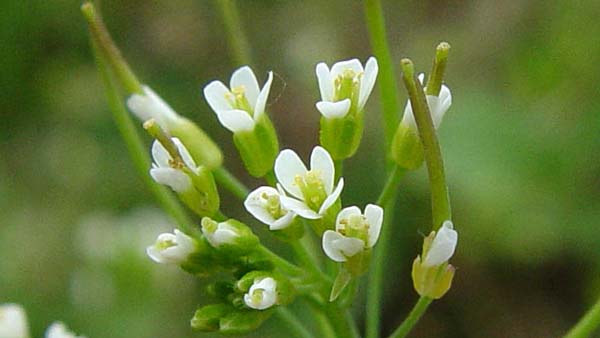Using a functional genomics approach to study ROI metabolism in plants (NSF-0431327)
Ever since the introduction of oxygen (O2) into our atmosphere by photosynthetic organisms, about two billion years ago, reactive oxygen intermediates (ROI) have been the unwelcome companions of life. In contrast to oxygen, these partially reduced or activated derivatives of O2 are highly reactive and toxic and can lead to the oxidative destruction of cells. In humans ROI play a key role in processes such as aging and cancer and in different degenerative diseases. In plants and crops ROI are the main cause of injury and yield loss during stresses such as drought, heat shock, cold and salinity. In spite of their toxicity, recent studies suggested that ROI regulate many different processes in plants including stress-response, development and growth. How this conflict is resolved in cells is largely unknown. Nonetheless, it is clear that the level of ROI in cells needs to be tightly regulated. The goal of this project is to identify and characterize the different cellular mechanisms that control ROI accumulation in plants. A unique approach of using mutants, deficient in key ROI-detoxifying enzymes, to induce the accumulation of ROI in specific cellular compartments, is proposed. It is hypothesized that mutants with suppressed capability to remove ROI will accumulate ROI and activate their ROI-response mechanisms. The study of gene expression in these mutants will therefore result in the identification and characterization of some of the key regulatory genes that control ROI accumulation in plants. Moreover, the approach proposed will simplify the complex interactions that exist between ROI and many different cellular pathways, and enable the isolation and characterization of different genes directly involved in regulating ROI metabolism in plants. Based on preliminary results it is hypothesized that members of the zinc-finger gene family play a central role in regulating ROI metabolism in plants. It is planned to determine how they control ROI metabolism and how they fit into the hierarchy of the ROI-response genes.

Arabidopsis mutants with
suppressed
capability to scavenge ROI will be used to induce an internal ROI
stress in plants under controlled conditions (using a time-course
design). Molecular analysis coupled with physiological and biochemical
measurements will be used to identify regulatory genes activated in
cells upon ROI accumulation. Transgenic plants expressing zinc-finger
proteins and other ROI-regulatory genes will be screened for their
tolerance to oxidative stress on agar plates. The function of specific
genes, identified by this screen, will be determined in transgenic
plants and mutants. A genetic screen to identify ROI-sensors will be
developed.
Data, methods, and biological material
will be made available to the public as soon as they are confirmed. Up
to 20 undergraduate students, including minorities, will be recruited
into the project and introduced to modern research techniques in plant
biology. An online course for undergraduate students will be developed
to share knowledge and enhance awareness to ROI and the important role
they play in plants and other organisms. A high school teaching kit
that includes a video presentation and several basic experiments
demonstrating the importance of ROI to plant protection will be
developed. Public access to the project will be ensured through a
website specifically developed for the project.
The ROI-tolerant plants, the database of ROI-associated genes and the flow-chart of ROI response (developed during the course of this study), could be used by many different research groups and scientists to determine to what extent and in what manner ROI are involved in the biological process/pathway they are studying. They would serve as a valuable resource and enhance our overall understanding of ROI function in plants during normal metabolism, as well as during periods of environmental stress.

 (2011 Nature Genetics Cover).jpg)
.jpg)
.jpg)
.jpg)
.jpg)
.jpg)
.jpg)
.jpg)